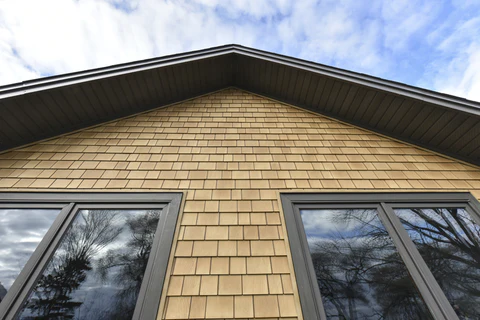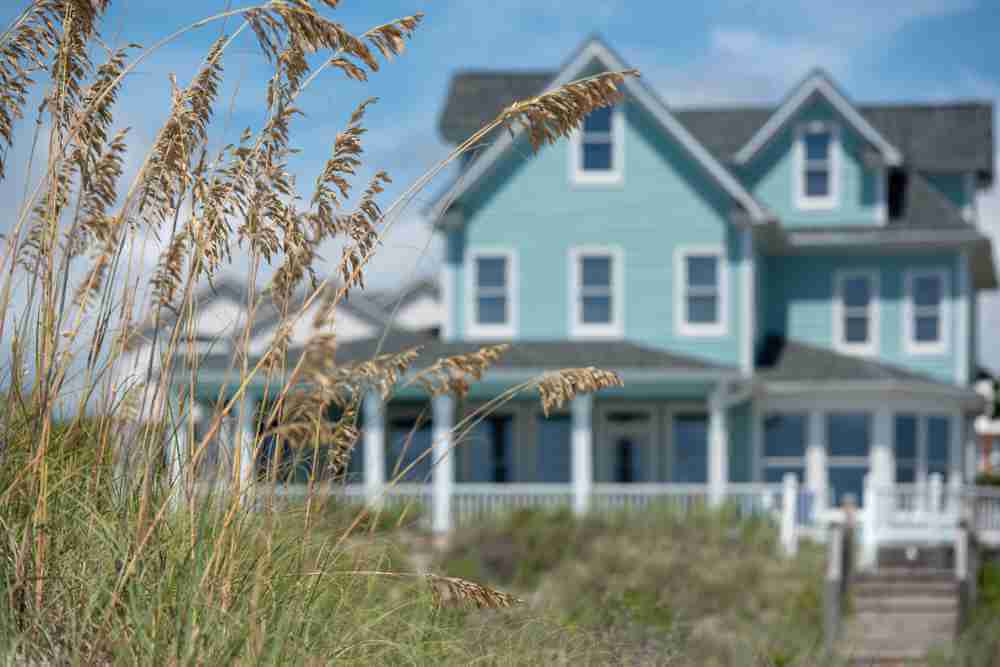Handyman Service Jax Beach: Mold & Mildew Defense Guide

Coastal living comes with constant salt air, long humid seasons, and frequent storms. That moisture-rich environment feeds mold and mildew in attics, bathrooms, closets, and inside your walls. Left alone, they stain surfaces, rot building materials, and contaminate indoor air.
If you want to stop mold, you must control moisture. You also need tight seals, balanced ventilation, and fast response after storms. Working with Jax Beach Handyman for inspections and preventive repairs can help you stay ahead of the problem. Start with a targeted moisture evaluation from a handyman service jax beach you can trust, then tackle the top risks in a logical order.
Why Jacksonville Beach Homes Are Prone to Mold and Mildew

Salt-laden air
- Salt crystals attract and hold moisture on surfaces.
- Salt film breaks down paint and caulk faster, creating micro-gaps where water enters.
- Metal fixtures corrode, which loosens fasteners and flashing around windows and roofs.
High humidity
- Outdoor relative humidity commonly sits above 70% much of the year.
- Warm indoor air meeting cool surfaces creates condensation on windows, ducts, and exterior walls.
- Bathrooms and laundry rooms spike humidity during daily use.
Poor ventilation and storm exposure
- Insufficient attic ventilation traps humid air, saturating insulation and roof sheathing.
- Wind-driven rain pushes moisture behind siding, under shingles, and through old caulk joints.
- Power outages reduce dehumidification, causing moisture spikes.
Common Mold and Mildew Hotspots in Homes
- Attics: Dark, hot, and humid. Warm air rises and condenses on sheathing. Inadequate soffit and ridge ventilation accelerates growth.
- Bathrooms: Showers and baths release steam. Weak or improperly vented fans fail to remove moisture.
- Closets: Tight, under-ventilated spaces against exterior walls create cool spots where moisture condenses.
- Windows and doors: Failed weatherstripping and caulk result in condensation and leaks into trim and drywall.
- Exterior siding and trim: Salt, sun, and storms degrade paint and caulk. Moisture infiltrates at joints and nail holes.
- HVAC and ductwork: Dirty coils and poorly insulated ducts sweat, feeding mold in insulation and registers.
- Under sinks and behind appliances: Slow leaks create hidden damp zones that support mildew.
Signs You Have a Mold or Mildew Problem
- Odors: Musty or earthy smells in closets, bathrooms, or around AC returns.
- Stains or spotting: Black, green, or white spots on ceilings, baseboards, grout, or window sashes.
- Condensation: Persistent fogging or wet glass on windows and sliders.
- Peeling paint: Bubbling or cracking exterior or bathroom paint suggests trapped moisture.
- Health effects: Increased coughing, sneezing, or irritated eyes indoors could indicate mold spores.
- Visible growth: Fuzzy patches on attic sheathing or damp drywall corners.
How Mold and Mildew Harm Your Home

- Structural damage: Long-term moisture rots framing, roof sheathing, and subfloors.
- Drywall and insulation: Paper-faced drywall and fiberglass insulation hold moisture and support mold growth.
- HVAC contamination: Spores spread through returns and vents, lowering indoor air quality and complicating cleanup.
- Finish damage: Staining on paint, caulk failure, and swollen wood trim require repair and repainting.
- Higher energy bills: Wet insulation and leaky envelopes reduce efficiency.
- Lower property value: Documented moisture problems deter buyers and increase repair demands.
Prevention Strategy Table
Use this plan to prioritize high-impact actions that reduce moisture and prevent mold growth.
| Action | What it does | Frequency | DIY or Pro | Approx. Cost (Typical) | Effectiveness (1–5) | Notes |
|---|---|---|---|---|---|---|
| Seal and re-caulk windows/doors | Stops wind-driven rain and air leaks | Every 2–3 years or after storms | Pro recommended | $200–$800 for a standard home | 5 | Use paintable exterior-grade, mildew-resistant caulk |
| Repaint with mildew-resistant exterior paint | Protects siding/trim and resists growth | Every 5–7 years | Pro | $2,500–$6,500+ | 5 | Prep and primer quality drive results |
| Install/upgrade bath fans (ducted outside) | Removes humidity at the source | Once; check annually | Pro | $300–$700 per fan | 5 | Target 80–110 CFM and humidity-sensing control |
| Attic ventilation tune-up (soffit/ridge) | Lowers attic humidity and temperature | Inspect yearly | Pro | $400–$1,500 | 4 | Clear soffit vents; add baffles as needed |
| Dehumidifier for living areas | Maintains indoor RH at 45–55% | Run daily May–Oct | DIY/Pro | $250–$1,200 | 4 | Continuous drain prevents overflow |
| Fix plumbing leaks promptly | Removes hidden moisture sources | As needed | Pro | $150–$600+ | 5 | Use drip sensors under sinks |
| Gutter cleaning and splash control | Moves water away from siding and foundation | 2–4 times per year | DIY/Pro | $150–$400 per visit | 4 | Add downspout extenders; check after storms |
| HVAC service and duct insulation | Reduces coil and duct condensation | Twice per year | Pro | $150–$500 service; insulation varies | 4 | Seal duct leaks; replace filters regularly |
| Deep clean tile, grout, and caulk | Removes biofilm and spores | Quarterly | DIY/Pro | $50–$400 | 3 | Use mold-specific cleaners and reseal grout |
| Storm response checklist | Prevents wet materials from turning moldy | After each major storm | DIY/Pro | $0–$500+ | 5 | Dry within 24–48 hours to prevent growth |
Why Use a handyman service jax beach for Mold Control
Moisture control is a systems problem. You need a technician who understands how building shells, ventilation, and weather interact. Here is what a qualified local pro delivers:
- Whole-home inspection: Targeted moisture meter checks at windows, baseboards, and attic sheathing. Visual review of caulk, paint, flashing, and bath fan ducting.
- Envelope sealing: Repair failed exterior caulk, weatherstripping, door sweeps, and siding penetrations.
- Ventilation upgrades: Right-size and re-duct bath fans to the exterior, add attic baffles and balanced soffit/ridge venting.
- Condensation control: Insulate sweating ducts and cold water lines. Recommend dehumidifiers for problem zones.
- Water management: Gutter cleaning, downspout redirection, and minor roof sealing to keep rain out.
- Materials knowledge: Use of mildew-resistant paints, moisture-resistant drywall in baths, and high-quality exterior sealants.
How Your Local Handyman Helps Homeowners
Experience in our coastal climate matters. A local team understands how salt, sun, and storms eat away at finishes and seals. Expect practical fixes that fit the way Jacksonville Beach homes are built and used.
- Attic and roofline: Clear blocked soffits, install baffles, repair ridge vents, and replace rusted fasteners that leak.
- Window and door envelope: Remove failed caulk, backer-rod gaps over 1/4 inch, apply premium elastomeric sealant, and replace brittle weatherstripping.
- Bath and laundry: Install humidity-sensing fans, re-grout and re-caulk tubs and showers with mold-resistant products, and set automatic door undercuts for airflow.
- Interior materials: Upgrade to moisture-resistant drywall in bathrooms and laundry areas. Use satin or semi-gloss paints with mildewcides.
- HVAC and ducts: Seal return leaks, insulate cold runs, adjust condensate drains, and recommend coil cleaning schedules.
- Storm-readiness: Provide a quick-dry plan for power outages and heavy rain, including box fan placement, dehumidifier staging, and priority checks.
Related Moisture Defense Guides:
- Jacksonville Beach Coastal Painting & Caulking
- Protect Your Jax Beach Home: Coastal Painting & Caulking Guide
Homeowner Checklist for Defense Against Mold/Mildew
Monthly
- Run a hygrometer check. Keep indoor humidity between 45% and 55%.
- Inspect bathroom ceilings and grout lines for spots. Clean and re-seal as needed.
- Check under sinks and around toilets for drips or damp cabinets.
- Wipe window sashes and tracks. Look for condensation and black spotting.
Quarterly
- Clean bath fan grilles and test airflow with a tissue test. Replace weak fans.
- Vacuum AC returns and replace filters. Inspect visible duct insulation for sweating.
- Deep clean tile, grout, and silicone in showers with a mold-targeted cleaner.
- Walk the exterior. Note peeling paint, cracked caulk, and soft trim.
Storm season and after heavy rain
- Check attic for damp insulation or darkened sheathing within 24 hours.
- Inspect windowsills, door thresholds, and baseboards for moisture.
- Run dehumidifiers and fans until indoor RH drops below 55%.
- Photograph and dry any wet materials immediately to prevent growth.
Annually
- Schedule a full home moisture and envelope inspection.
- Re-caulk suspect joints and repaint chalking or failing surfaces.
- Service HVAC and clean coils. Insulate sweating lines.
- Clean gutters and add downspout extenders if splashing hits siding.
Cost Factors & ROI of Prevention
Prevention costs a fraction of remediation. Here are typical figures for Jacksonville Beach homes:
| Item | Typical Cost Range | What You Get | Payoff |
|---|---|---|---|
| Moisture and envelope inspection | $150–$350 | Targeted report with fixes prioritized by risk | Prevents hidden damage and guides budget |
| Exterior re-caulking package | $300–$900 | Weatherproof windows, doors, and penetrations | Blocks wind-driven rain and reduces AC load |
| Bath fan install/upgrade | $300–$700 per bath | Humidity-sensing exhaust, ducted outdoors | Stops fogging and mildew in wet rooms |
| Attic ventilation improvements | $400–$1,500 | Balanced intake/exhaust, baffles, clear soffits | Protects roof sheathing and insulation |
| Dehumidifier with drain | $250–$1,200 | Stable indoor RH in peak humidity months | Reduces odors, condensation, and spores |
| Mold remediation (minor area) | $500–$2,500 | Containment, cleanup, and HEPA filtration | Reactive cost if prevention fails |
| Mold remediation (major areas) | $3,000–$10,000+ | Removal of contaminated drywall/insulation | Often avoidable with prevention |
Even a modest prevention plan can save thousands by avoiding drywall removal, repainting, and HVAC cleaning. A quick evaluation from a handyman service jax beach can pinpoint the best returns for your budget.
FAQs
What’s the difference between mold and mildew?
Mildew is usually a surface-level fungus, often gray or white, that grows on damp surfaces like shower grout. It cleans off more easily. Mold tends to be darker (black or green), penetrates porous materials, and can damage drywall, wood, and insulation.
DIY vs professional mold cleaning?
For small, surface areas on non-porous materials, DIY cleaning with a mold-specific cleaner can work. Wear gloves and eye protection, and ventilate the area. For recurring growth, areas larger than 10 square feet, or growth on drywall, insulation, or inside HVAC, hire a professional and correct the moisture source.
What are the health risks?
Mold spores can irritate the nose, throat, lungs, and eyes. People with asthma or allergies may experience worsening symptoms. Some molds produce allergens that can trigger reactions over time. Reducing indoor humidity and cleaning visible growth lowers exposure.
How often should I inspect for mold?
Do quick monthly checks in bathrooms, closets, and windows. Inspect the attic and around exterior doors quarterly. After any major storm, check the attic, baseboards, and windows within 24 hours. Schedule a professional moisture inspection annually or when you notice persistent odors or stains.
Can painting prevent mildew?
Paint alone does not solve moisture problems, but high-quality exterior paint with mildewcides, paired with proper prep and caulking, resists growth and sheds water. For baths, use moisture-resistant paint and run a good exhaust fan to keep humidity down.
Do I need a dehumidifier if I have AC?
Often yes. AC reduces humidity some, but during long humid periods or mild temperatures when AC cycles less, indoor RH can stay high. A dedicated dehumidifier maintains target humidity and prevents condensation on cool surfaces.
Conclusion
Control moisture, seal your envelope, and ventilate wisely. Start with a focused inspection, fix leaks and weak seals, and upgrade bath fans and attic airflow. Paint and caulk with coastal-grade products and keep indoor humidity between 45% and 55%.
For a targeted plan and skilled repairs, schedule a home evaluation with Jax Beach Handyman. Book your moisture assessment with a trusted handyman service jax beach and protect your home from mold and mildew all year.
